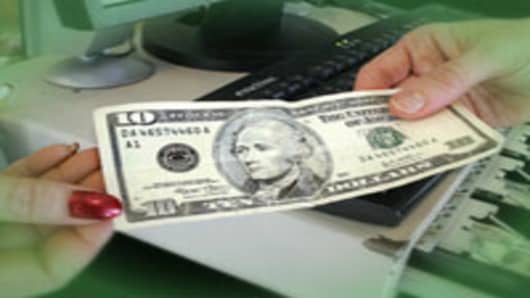Wall Street seems to have concluded that the worst of the credit crisis is over and investors are looking to better economic times ahead, but Main Street is sending the opposite signal.
While banks have raised cash by the billions to shore up balance sheets that were battered by bad bets on mortgages and other loans, the front-line staff in charge of doling out that money to consumers and companies remain downbeat, suggesting that the economy may stay in the doldrums for some time.
The U.S. Federal Reserve's quarterly survey of senior loan officers, released this week, showed widespread tightening of credit. The percentage of banks reporting tougher lending standards was close to, or above, historical highs for nearly all loan categories in the survey.
Banks clamped down on loans to companies large and small, to prime and subprime mortgage holders, and on credit cards, home equity lines and other consumer credit. Most banks blamed a less favorable economic outlook for the tightening terms rather than their own bruised balance sheets.
That does not bode well for spending, which accounts for the bulk of the U.S. economy, or for corporate profits.
"Main Street has just entered the act. The peak of the pain is not visible yet," said Asha Bangalore, an economist with Northern Trust in Chicago.
The consumer strains are well-documented. Aside from the credit contraction, gasoline and grocery prices are on the rise, the housing market remains distressed, and consumer confidence is at recessionary levels. Tax rebate checks are in the mail, but that alone cannot compensate for the credit clamp-down and inflation pressure.
"Given that households are strapped financially, it is far-fetched even with the stimulus checks to expect a sharp increase in consumer spending," Bangalore said. "You have seen auto sales numbers for April, they posted a sharp drop."
Meanwhile, the Standard & Poor's 500 index is up nearly 13 percent since mid-March as investors look beyond the current troubles.
Christmas Party
Stock markets are forward-looking by nature, so it is not surprising that investors would think about how the economy might look in the coming months.
To say that Wall Street is expecting a second-half recovery would be an understatement. According to Thomson Reuters research, analysts are expecting fourth-quarter earnings growth of 62 percent for the S&P 500. Granted, that is a comparison with a disastrous fourth quarter of 2007, when earnings were down some 25 percent. In the current quarter, S&P 500 earnings are expected to be down 6 percent.
Not only is the market anticipating a swift recovery, but the earnings forecasts suggest that they think it will be lasting. For next year, analysts think earnings will be up 18 percent, twice the growth they are predicting for 2008.
They see particularly strong growth for consumer discretionary companies, beginning with the next quarter. Earnings for that sector are expected to jump by 41 percent in the fourth quarter, and 24 percent next year.
But if banks remain reluctant to lend, spending will likely be sluggish. The head of Wal-Mart's U.S. stores division said in late April that consumers appeared to be "topped out" and unable to obtain any more credit.
Deutsche Bank economists said if banks stay as stingy as they are now for a few more quarters, it could shave one-half of a percentage point from consumer spending. Considering that consumer spending rose by a slim 1 percent in the first quarter, that would be a significant blow.
Northern Trust's Bangalore said in past recessions, it has taken several quarters for credit conditions to improve. With banks staring at losses in the $400 billion range just from bad mortgage-related assets, it could be even longer this time.
Jack Ablin, chief investment officer at Harris Private Bank, pointed to another sign that Wall Street's recovery rally may be getting ahead of itself.
The Dow Jones index of transportation stocks has jumped 20 percent from a March 10 low, hitting an all-time high on April 30, he said. Transportation stocks are often seen as early indicators of economic strength.
"While I'm encouraged by the move, the surge in transports runs completely counter to the spike in crude" oil, he said, noting that, until March, the transport sector had consistently taken its cues from oil prices over the last two years.
"The move in transports suggests that our economic downturn will be short-lived and mild. The challenges facing homeowners and consumers these days make this view overly optimistic," he said.


